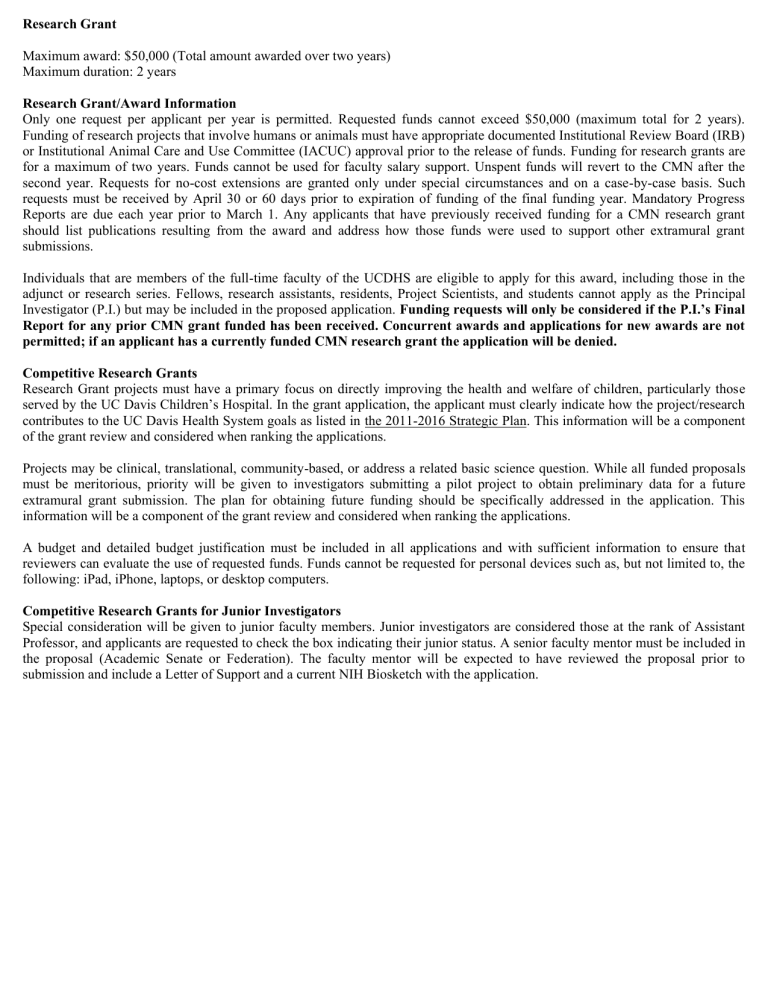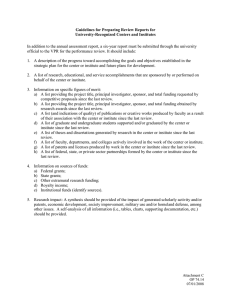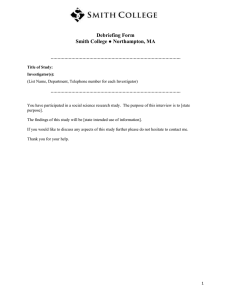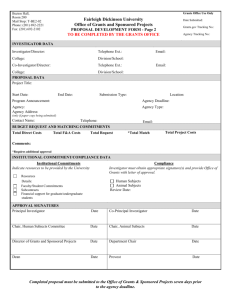Research Grant Research Grant/Award Information

Research Grant
Maximum award: $50,000 (Total amount awarded over two years)
Maximum duration: 2 years
Research Grant/Award Information
Only one request per applicant per year is permitted. Requested funds cannot exceed $50,000 (maximum total for 2 years).
Funding of research projects that involve humans or animals must have appropriate documented Institutional Review Board (IRB) or Institutional Animal Care and Use Committee (IACUC) approval prior to the release of funds. Funding for research grants are for a maximum of two years. Funds cannot be used for faculty salary support. Unspent funds will revert to the CMN after the second year. Requests for no-cost extensions are granted only under special circumstances and on a case-by-case basis. Such requests must be received by April 30 or 60 days prior to expiration of funding of the final funding year. Mandatory Progress
Reports are due each year prior to March 1. Any applicants that have previously received funding for a CMN research grant should list publications resulting from the award and address how those funds were used to support other extramural grant submissions.
Individuals that are members of the full-time faculty of the UCDHS are eligible to apply for this award, including those in the adjunct or research series. Fellows, research assistants, residents, Project Scientists, and students cannot apply as the Principal
Investigator (P.I.) but may be included in the proposed application. Funding requests will only be considered if the P.I.’s Final
Report for any prior CMN grant funded has been received. Concurrent awards and applications for new awards are not permitted; if an applicant has a currently funded CMN research grant the application will be denied.
Competitive Research Grants
Research Grant projects must have a primary focus on directly improving the health and welfare of children, particularly those served by the UC Davis Children’s Hospital. In the grant application, the applicant must clearly indicate how the project/research contributes to the UC Davis Health System goals as listed in the 2011-2016 Strategic Plan. This information will be a component of the grant review and considered when ranking the applications.
Projects may be clinical, translational, community-based, or address a related basic science question. While all funded proposals must be meritorious, priority will be given to investigators submitting a pilot project to obtain preliminary data for a future extramural grant submission. The plan for obtaining future funding should be specifically addressed in the application. This information will be a component of the grant review and considered when ranking the applications.
A budget and detailed budget justification must be included in all applications and with sufficient information to ensure that reviewers can evaluate the use of requested funds. Funds cannot be requested for personal devices such as, but not limited to, the following: iPad, iPhone, laptops, or desktop computers.
Competitive Research Grants for Junior Investigators
Special consideration will be given to junior faculty members. Junior investigators are considered those at the rank of Assistant
Professor, and applicants are requested to check the box indicating their junior status. A senior faculty mentor must be included in the proposal (Academic Senate or Federation). The faculty mentor will be expected to have reviewed the proposal prior to submission and include a Letter of Support and a current NIH Biosketch with the application.
RESEARCH PLAN
Please include all the following (maximum length of 7 pages, 1” margins, Arial 11-pt. font, single spaced, includes all relevant figures):
1.
Specific Aims and Hypotheses (1 page)
2.
Significance, Background, and Preliminary Data (1-2 pages)
3.
Methods of Proposed Research (to include specific methods, statistical methods and power analysis, expected results, potential problems/alternative approaches, timeline, 2-3 pages)
4.
Justification (.5 page) a.
External Sources of Funding Resulting from project b.
Role of Collaborator(s)
5.
Impact (.5 page)
6.
Contribution to UC Davis Health System goals as listed in the 2011-2016 Strategic Plan
7.
Implications for Quality of Care in Children
8.
Literature Cited (1 page, Limit 30 references, cited in full)
ITEMIZED BUDGET
1.
Salary and Fringe Benefits (Only allowed for students and technical assistance. No Salary or Fringe Benefits permitted for
Principal Investigator or Co-Investigators)
2.
Additional Costs a.
Equipment (Itemize by category) b.
Supplies (Itemized by category) c.
Inpatient Care Costs (Only costs incurred outside standard care will be allowed) d.
Outpatient Care Costs (Only costs incurred outside standard care will be allowed) e.
Other Expenses (Itemized by category)
3.
Budget Justification a.
Describe in detail the specific roles of the personnel, consultants, and collaborators proposed. b.
Describe in detail all budgeted items and rationale for inclusion. c.
Explain and justify any unusual items such as equipment over $5,000 and patient care costs: Patients should not incur costs related to this research above those related to standard medical care.
OTHER SUPPORT
Follow Instructions Carefully:
Incomplete, inaccurate, or ambiguous information regarding OTHER SUPPORT may lead to disqualification. If there are any changes in this information after submission (e.g., newly funded grant particularly if in the same research area), the CMN Executive Committee must be notified.
Other support is defined as any funds or resources, whether Federal, non-Federal, or institutional, available to the
Principal Investigator (and other key personnel named in the application) in direct support of ongoing research through research or training grants, cooperative agreements, contracts, fellowships, gifts, prizes, or other means.
Key personnel include the Principal Investigator and other individuals who contribute to the scientific development or execution of the project in a substantive, measurable way. Key personnel typically include all individuals with doctoral or other professional degrees, but in some projects will include individuals at the masters or baccalaureate level provided they contribute in a substantive way to the scientific development or execution of the project.
Reporting requirements include:
For each key personnel, describe:
(1) All currently active support.
(2) All applications and proposals pending review or award, whether related to this application or not. If the support is part of a larger project, identify the Principal Investigator and provide the data for the relevant sub project(s).
RESOURCES AND ENVIRONMENT
1.
Facilities: Mark the facilities to be used listed on the face page, and briefly indicate their capacities, pertinent capabilities, relative proximity, and extent of availability to the project. Use “Other” to describe the facilities at any other location and at sites for field studies. Use continuation pages if necessary. Include an explanation of any consortium/contractual arrangements with other organizations. a.
Laboratory: b.
Clinical: c.
Animal: d.
Computer: e.
Office: f.
Other:
2.
Major Equipment: List the most important equipment items already available for this project, noting the location and pertinent capabilities of each and the extent to which it will be available to the project.
3.
Additional Information: Provide any other information describing the environment for the project. Identify support services such as consultants, secretarial, machine shop, and electronics shop, etc., and the extent to which they will be available to the project.
BIOGRAPHICAL SKETCH (All applicants, collaborators, and mentors for junior faculty submissions)
1.
Complete and include the current NIH Biographical Sketch Form and ensure the page requirements are adhered to
(http://grants.nih.gov/grants/funding/phs398/biosketch.pdf)


